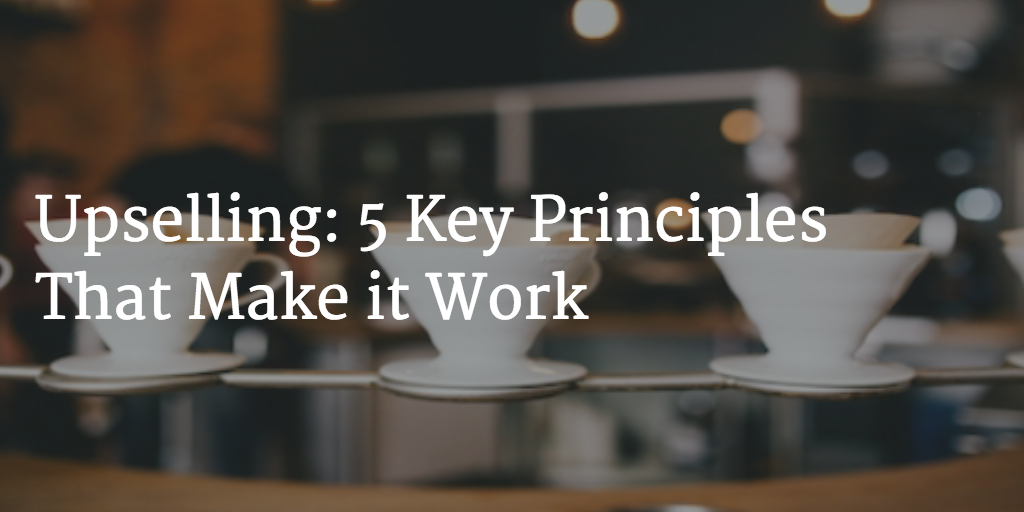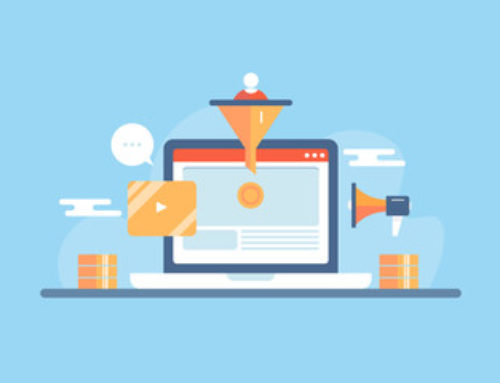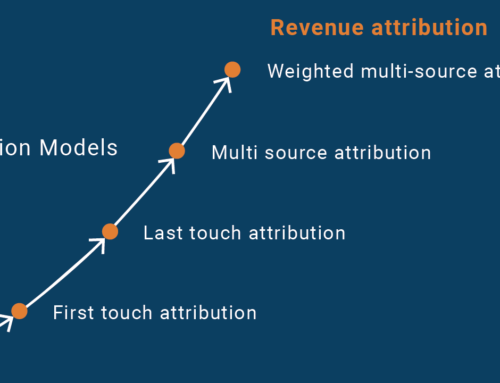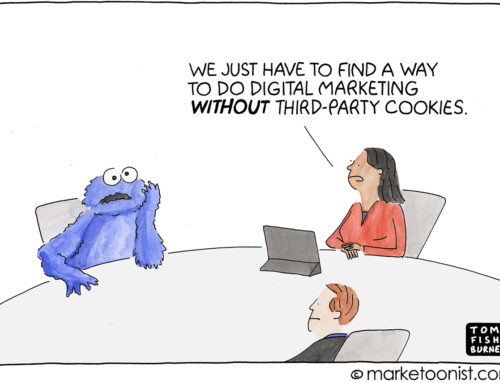When a business is just getting started, paying to acquire new leads and customers is standard procedure. It’s an effective way to cut through the noise and rack up fast results—even without a million-dollar marketing budget or worldwide brand recognition.
But what happens when it’s time to take things to the next level and scale the business?
Continuing to pay for more customers is always an option, but it’s pricey. Fortunately, there’s a more cost-effective alternative: getting more out of customers you already have.
That’s where upselling comes in. By making customers additional offers (and convincing them those offers are worth the extra money), you can increase the average order value of every transaction. There’s less pressure to constantly acquire new customers when you’re getting more mileage out of the ones you already have.
Image credit: Deathtostock
Most Businesses Aren’t Making the Most of Their Up-Sells
Most business owners understand how important it is to strategically up-sell customers at every possible opportunity. Research from the book Marketing Metrics found that the probability of closing a new customer is between 5 and 20%. Selling to an existing customer, on the other hand, boosts that range up to 60-70%.
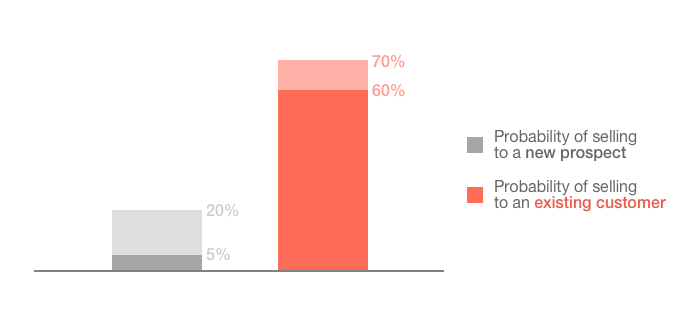
Image source: Groove HQ
But many of businesses struggle in the execution. They might do well with convincing someone to buy a product or service, but when it’s time to up-sell, they flop.
With as much potential up-selling has to skyrocket your profits, you’d think businesses would be paying more attention to it. But it seems the opposite is true. The “afterthought up-sell”—where a business tacks on a random product to a customer’s checkout page and hopes they’ll buy—is closer to the norm than the exception.
Other businesses pay plenty of attention to the process, but they don’t convert as well as they should because they don’t implement a few key up-selling principles.
5 Principles of Effective Up-Sells (and the Companies Already Applying Them)
No matter your niche, strategic up-selling can help you avoid crushing customer acquisition costs and increase your customer lifetime value.
The specific offers you make will vary depending on your industry and target customer, but incorporating the general principles below will help you convince more customers to add to their shopping carts.
Here are five key principles—along with examples of businesses applying them—you can use to make your up-selling more effective:
5. A Value for Value Mindset
Many businesses hear about the enormous potential of up-selling, get excited, and rush to implement it as soon as possible. But they’re more focused on increasing their average order values than finding creative new ways to serve their customers or clients.
No one likes to feel taken advantage of. The same goes for your customers. Aggressive up-selling tactics that hurl half your product catalog at people in the hopes something will hook might make a few sales. But it’ll also leave a bad taste in customers’ mouths.
A more sustainable approach is based on the principle of mutual exchange. You offer customers more value in the form of additional products or services, and they offer you more revenue.
Instead of asking “how can I get more out of this customer?” ask yourself “how can I better understand this customer and help them meet their needs?”
Avoid simply listing your up-sell alongside your main offer without explaining why you’re doing it. That puts the burden on customers to “read between the lines” and figure out why that extra product or service would help them. Most don’t have the time or inclination to do that.
But if you show customers why the extra product or service could help them even better than what they originally planned to buy, many will open up their wallets and purses. Apple does a good job of this. They give you plenty of options to upgrade your MacBook Pro, but they take the time to explain why upgrading the computer specs will benefit the customer:
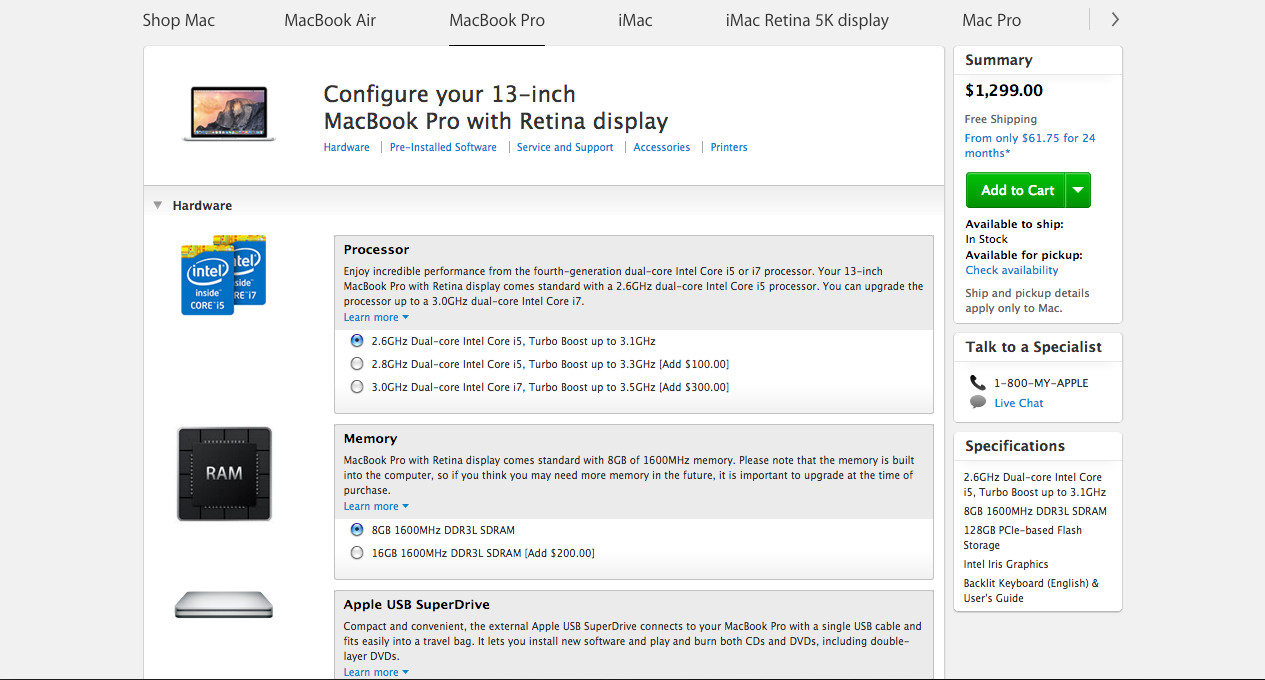
Image credit: Apple
Plenty of customers will respond to up-sell offers (and be happy to buy more from you) as long as they’re convinced you have their best interest in mind.
4. Proper Timing
“Would you like fries with that?”
McDonald’s restaurants around the world have turned this simple question into one of the most popular up-sells around. McDonald’s employees have done it for years, and they continue to do it because it flat out works.
There’s an important up-selling principle at play here that might not seem obvious: timing.
What do you think would happen if a McDonald’s employee asked a customer if they wanted to add fries to their meal while the customer was still browsing the menu? Or if they cut off the customer halfway through their order to make the offer?
Sales would plummet. Customers would be annoyed. Some might get so irritated they’d back out of ordering a McDonald’s meal altogether.
There’s a reason why McDonald’s employees wait until after they know what a customer wants before asking for the up-sell. You probably wouldn’t try to sell fries to someone ordering a salad or just a drink. Understanding what the customer wants is the first step to tailoring an up-sell that makes sense for both parties involved.
The window of opportunity for up-selling happens sometime after the customer makes it clear what they want to buy and sometime before they complete the transaction. Getting the sequencing wrong—by pushing too hard before they make up their minds or waiting too long after they do—is a recipe for low conversions.
Under Armour does a good job of this. They wait until I put a pair of shoes into my shopping cart before displaying other items I might like to buy as well:
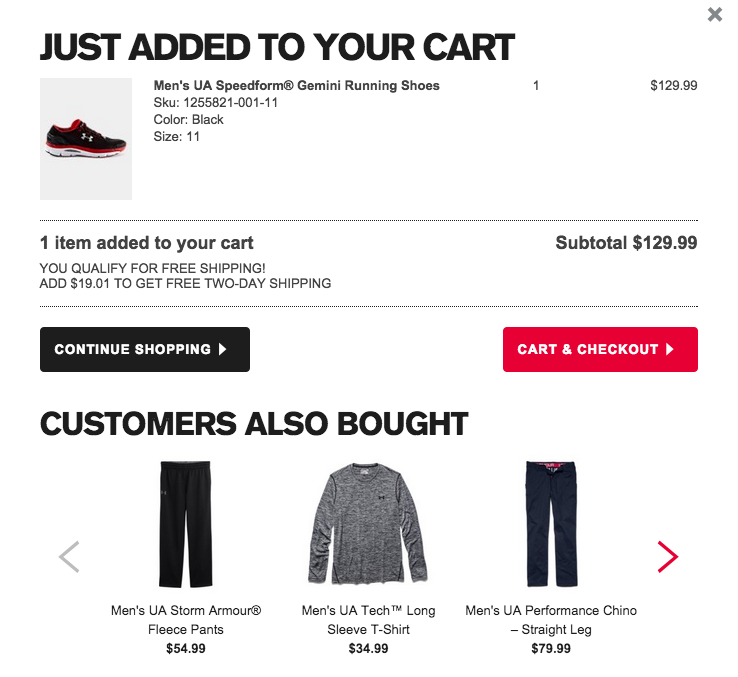
Image credit: Under Armour
I can check out those items and add them to my shopping cart if I like. Under Armour presents them in a non-pushy, helpful way.
3. Limiting Up-Sell Offers to Related Products or Services
A lot of businesses struggle to up-sell because they aren’t offering additional products or services that have anything to do with the customer’s original intended purchase.
These seemingly random up-selling attempts are ineffective, and they put off customers. They come off as transparent attempts to make some extra cash, offload lingering inventory, or squeeze more value out of customers without regard for what they’re getting in return.
But up-selling can lead to the increased average order values businesses are looking for (and add more value to customers) if it’s focused on related products or services. Smart up-selling helps customers answer a question that’s already on their minds:
“How can I get more value out of this product or service?”
Customers reveal their needs by the items they add to their online shopping carts. By limiting your up-sell options (2 or 3 is a good number to keep people from getting overwhelmed) to focus on those needs and interests exclusively, you make the customer feel understood. That improves their experience—and increases the likelihood of you converting the up-sell.
Outdoor clothing retailer Patagonia does a nice job of this. Take a look how they use data from previous customers’ shopping cart to help me consider what I might want to add to mine:
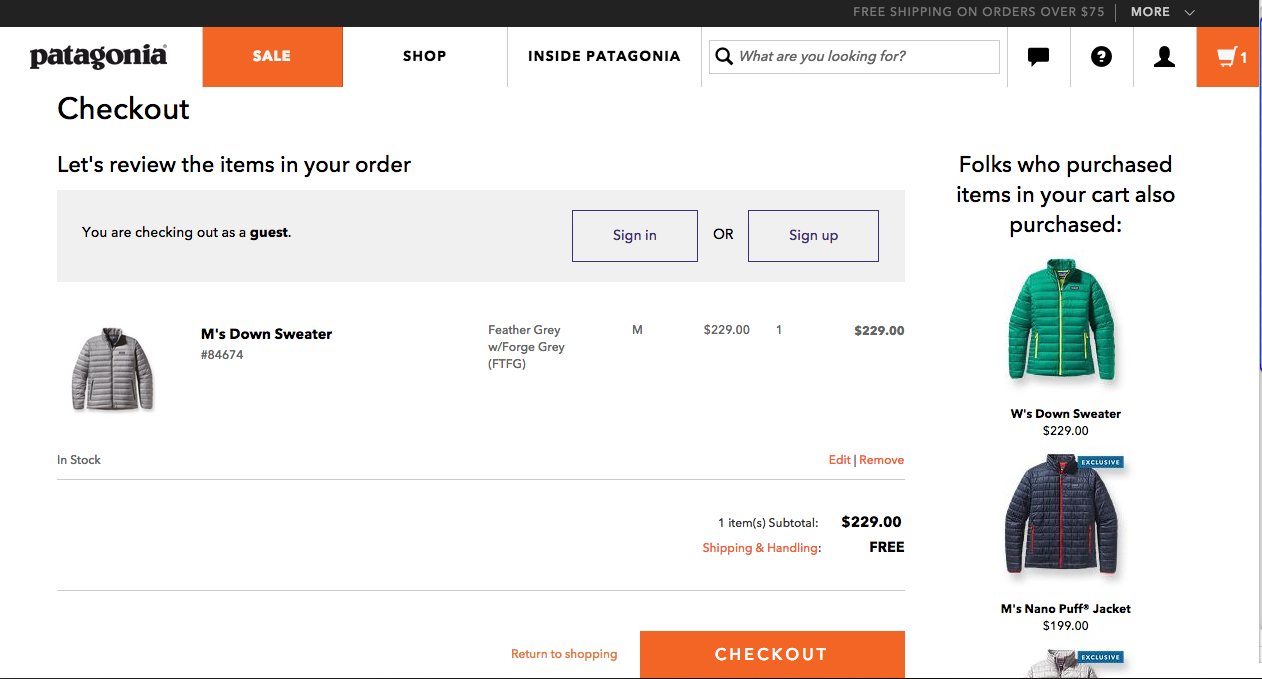
Image credit: Patagonia
You don’t see shoes, backpacks, tents, or anything else Patagonia sells. Because I’m already in the market for a coat, it makes sense for them to recommend others.
2. Sensitivity to How the Increased Price Will Affect Customers
Ever had a waiter try to sell you the most expensive bottle of French wine on the menu when you just ordered a chicken sandwich?
It happened to me. I still cringe a little just thinking about it. Looking at what I had already ordered, why in the world would someone think I could afford that… especially for lunch?
This happens with up-selling online all the time. A customer’s on the verge of buying a $15 dollar eBook when someone tries to up-sell them on a $2,000 all-day consulting session. It never works out.
Why?
Because the prices of the original and up-sell items are too far out of line. Even if a business offers an up-sell that the customer needs, trying to double, triple, or quadruple the original purchase amount rarely pans out.
When a customer chooses what they want to buy, it creates an expectation of how much money they’ll spend. This amount “anchors” how receptive they’ll be to different up-sell offers.
There’s a general consensus (though it’s worth testing) that up-sells shouldn’t increase the order amount by more than 25%. Don’t be afraid to offer additional products or services, but just stay aware of how they affect expectations that were already set in the customers’ minds.
1. Bundling and Price Discounting
One of the best strategies to make customers receptive to purchasing additional products or services is to bundle them with the original item or offer price discounts.
Savvy marketers have made a fortune by “bundling” offers—making buying multiple items together cheaper than it would’ve cost if the customer bought them separately. Researchers from Carnegie Mellon University studied the handheld video game market to examine the effect of bundling on Nintendo’s Game Boy Advance. Over a 4-year period, selling the game system with a game moved 100,000 more units.
You’ve seen bundling in action if you’ve ever shopped at Amazon. Take a look how they try to up-sell me on buying additional volumes of the graphic novel I’m looking for:

Image credit: Amazon
I already knew I wanted to buy the first volume in the series. That wasn’t the issue. But do I want to go ahead and pick up the second and third one as well? Sure. Why not? It’s convenient to consolidate my purchases into a single order, and both volumes are on sale!
Another option is to offer price discounts that give customers an incentive to spend more money or buy more items. These discounts work well because they help raise the average amount customers spend every time they buy from you.
A few ways you can use discounts to up-sell more effectively:
- Offer free shipping if the order exceeds a certain dollar amount
- Give new customers a coupon code they can apply on an additional purchase
- Make a one-time offer to new customers at a discount.
Take a look how Golf Magazine discounts their price based on the subscription length the customer chooses:
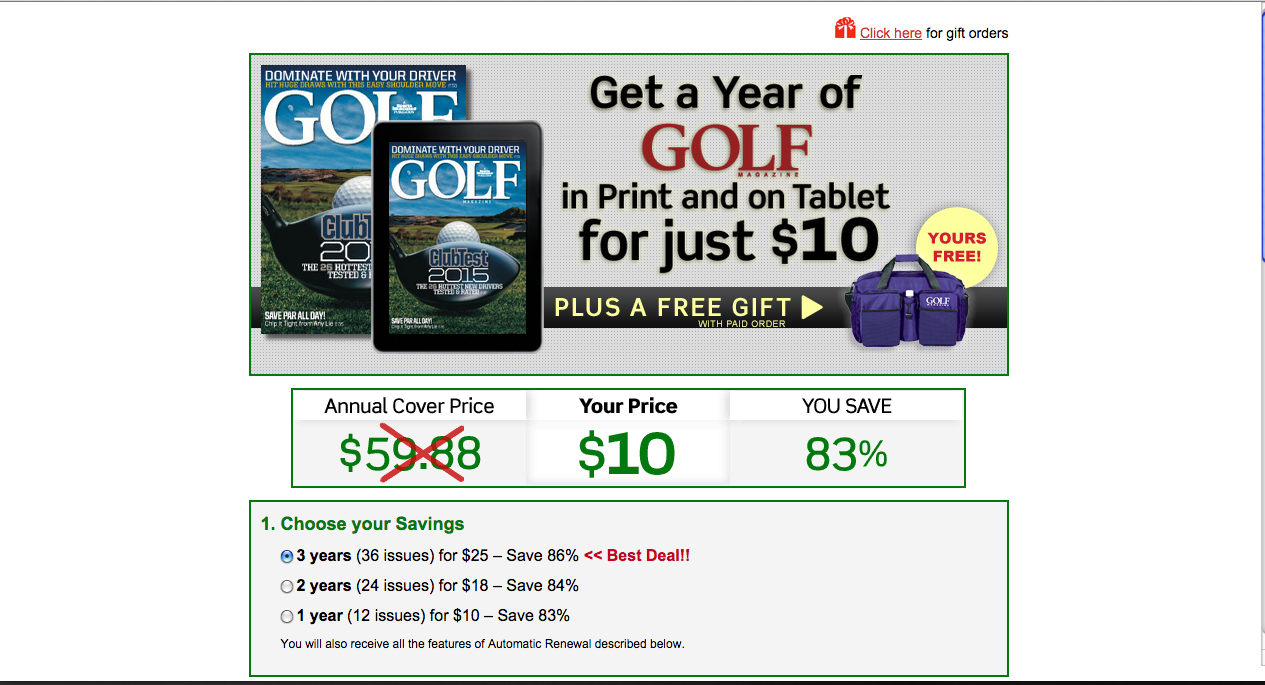
Image credit: Golf Magazine
Your Turn
Done right, up-selling can be one of the most cost-effective ways to expand your business and gain an edge over competitors.
It doesn’t have to be complicated to pay off for you. Start with the five principles above (and pay attention to the businesses that are applying them well). You’re well on your way to getting the most out of every opportunity by offering customers even more value.
How do you up-sell your customers or clients? Leave a comment below and let us know.
